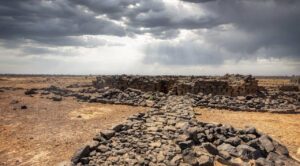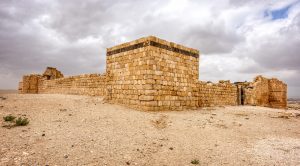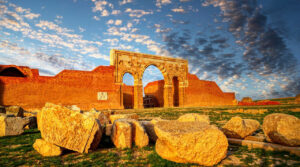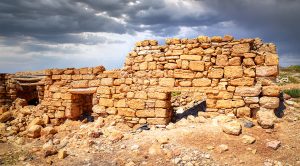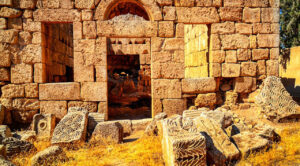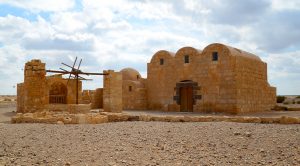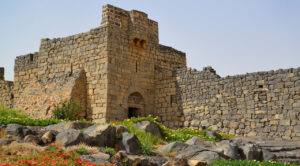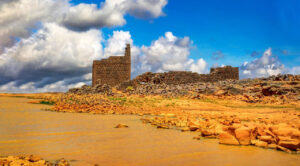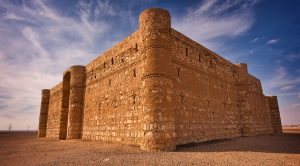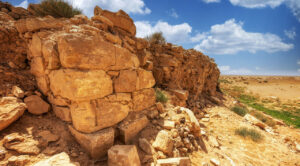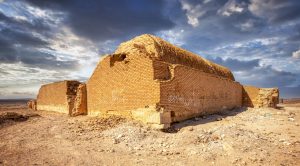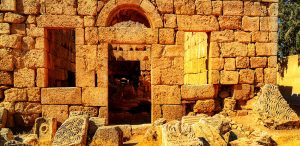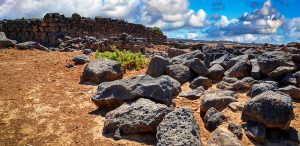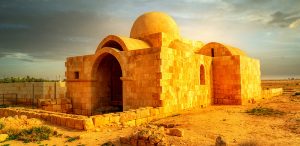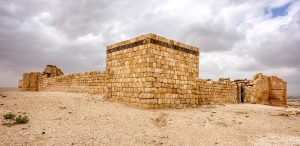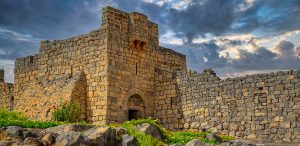Qasr Al-Mushatta (Winter Palace), the largest and most ambitious of the Umayyad palaces in Jordan, sits some 30 km south of the capital Amman and just north of Queen Alia International Airport, easily reached by a 13-kilometre drive along the airport’s perimeter road. While not exactly on the Desert Castles “loop” Qasr Al-Mushatta was perhaps one of the most beautiful Islamic creations in terms of architectural style and decoration with a combination of Byzantine, Sassanian, and Persian influences.
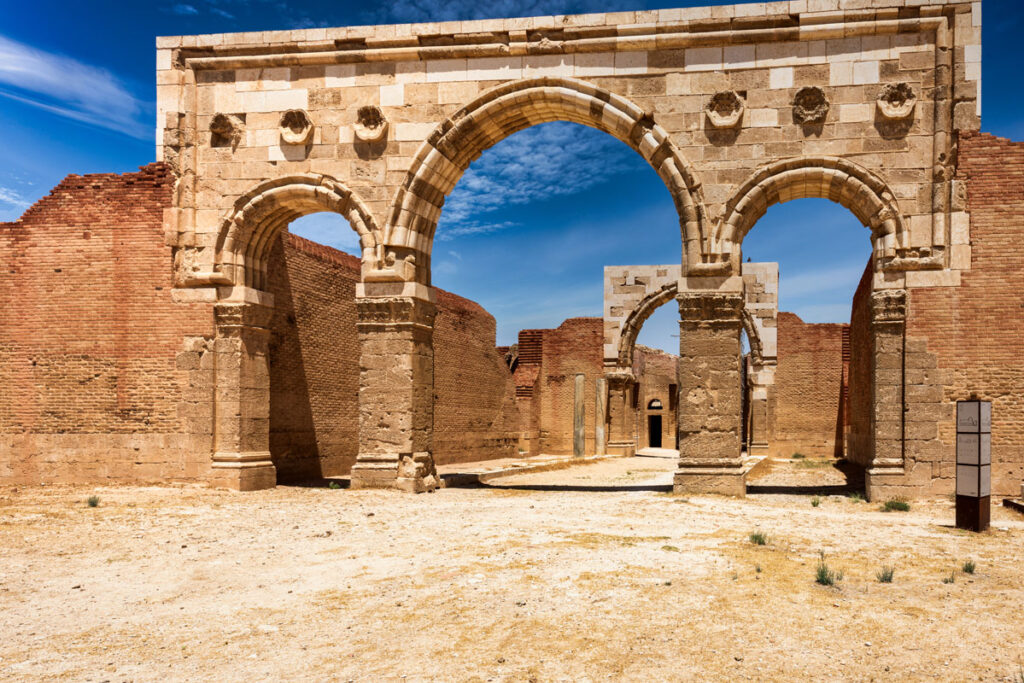
In plan, Qasr Al-Mushatta is a square structure (144 m x 144 m sq) consisting of an outer wall made up of 25 towers as well as a small central tract of rooms. These rooms included a throne room, courtyard and mosque. The rooms occupy a central tract within the walls. The southern side contains the entry hall and mosque which was situated to face Mecca. The southern side contains another small gate that leads to the courtyard. The north side of the central tract contains the residential section of the palace which was a three-bay hall.
Qasr Al-Mushatta was built out of brightly coloured bricks and stone, and in this manner is similar to Qasr Tuba. The intricate stone carving along the exterior of the southern wall, part of which was taken to Germany in 1904, shows persisting Sassanid and classical influences.
Naturalistic acanthus and vine scrolls, as well as animals and figures carved in stone, all demonstrate the high-quality skills of the builders. It is not unlikely though that some of the craftsmen were recruited from Egypt and Iran.
It is believed that the palace was intended to accommodate a large number of people, perhaps the whole Umayyad court. It was also designed for ceremonial grandiose performances as is evident in the incorporation of the throne room and basilica-like hall.
It is worth mentioning that a significant part of the southern facade of Al-Mushatta including the main entrance was moved to the “Staatliche Museen zu Berlin”. During the rule of the Ottoman Sultan Abd al-Hamid (1293/1876 1327/ 1909), Jordan was part of the Ottoman Empire and was given the facade as a present to the German Kaiser Wilhelm II (1888-1918). It is divided into triangular sections that measure about 2.85 m in height and 2.50 m in width at the base. A large rosette highlights the centre of each of the triangles.
Even though the palace was never completed, it was impressive nevertheless. It is worth visiting Al-Mushatta at sunset as the last rays illuminate the exquisite brickwork which is still standing after over a thousand years of wear and tear and seems almost as if they were built yesterday.
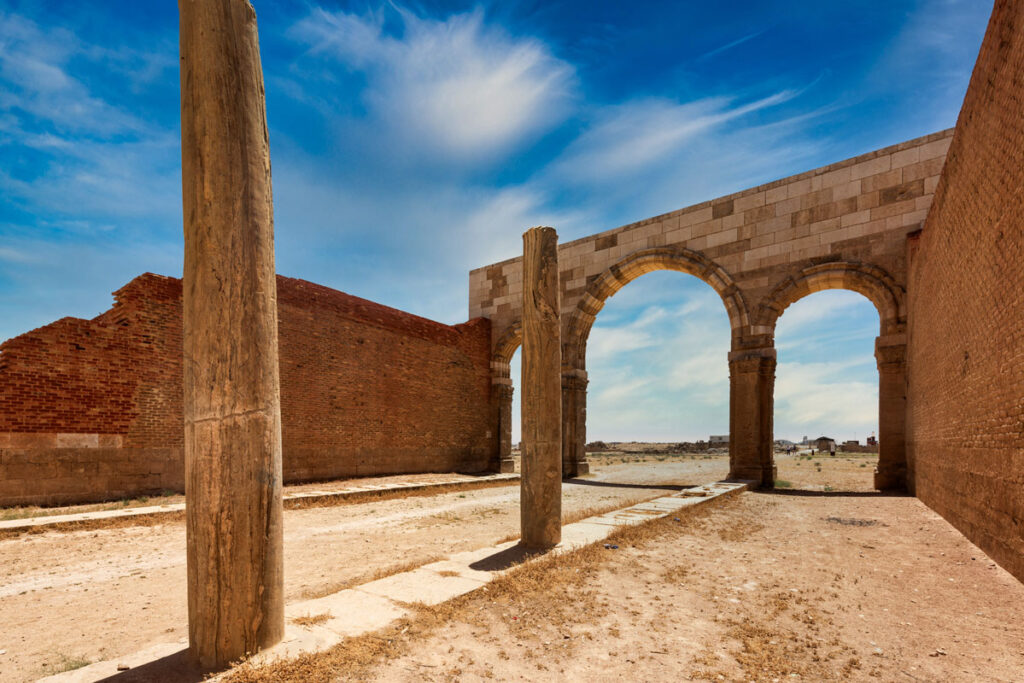
There are several castles and palaces in Syria, Jordan, Israel, the Palestinian West Bank and Lebanon that date from the Umayyad dynasty, the so-called “Desert Castles”. Qasr Al-Mshatta is one of the grander examples. They seem to have had several roles, probably including political and military control of the local area, and pleasure in the form of hunting.
In 1964 a brick was found at Mshatta with an inscription on it written by Sulaiman ibn Kaisan. Kaisan is known to have lived between 730 and 750 CE which lends further evidence to the theory that Caliph Al-Walid II commissioned the construction. His was the first of four short reigns of Caliphs between 743 and 750, after which the Abbasid dynasty came to power and moved the capital from Damascus, near the palace, to Bagdhad. If work had not already been abandoned, it no doubt was at that point.

